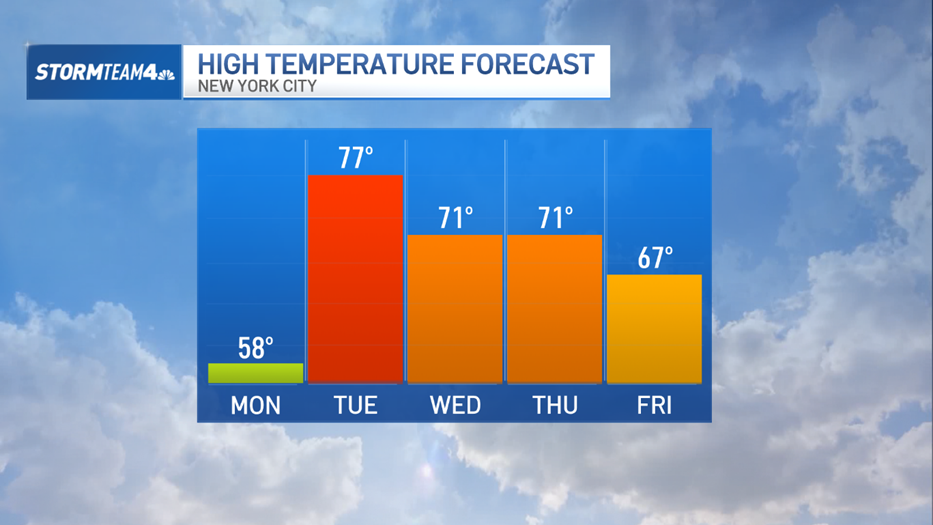Rising Temps, Rising Pollen: Allergy Survival Guide
Spring Fever Alert: Temperatures Spike as Pollen Counts Soar!
Introduction: The Great Weather Rollercoaster
Well, folks, buckle up! Mother Nature seems to be playing with the thermostat like a kid with a new toy. One minute we're bundled up in jackets, the next we're reaching for our favorite t-shirts. But there's a catch – as temperatures climb, so do the pollen levels. Are you ready for the sneezing symphony that's about to begin? Let's dive in!
The Weekend Heatwave: A Glimpse of Summer
Remember that glorious weekend? Saturday saw us basking in a balmy 85 degrees. That's practically June weather! It was the kind of day that makes you want to fire up the grill, grab a cold drink, and soak up the sun. But like all good things, it couldn't last forever.
Monday's Chill: A Brief Intermission
Monday decided to throw us a curveball with cloudy skies and temperatures stuck in the 50s. It felt like someone hit the pause button on spring. But don't despair, warm weather lovers! This is just a temporary setback.
T-Shirt Weather Returns: Get Ready to Shed Those Layers
The good news is that the warm weather is making a comeback. We're expecting temperatures to climb back into the upper 70s on Tuesday. That's more than enough reason to dust off your shorts and t-shirts. Get ready to enjoy some sunshine!
The Pollen Predicament: A Sneezing Pandemic?
But before you rush out to enjoy the weather, there's something you need to know: the trees are blooming. And with those blooms comes a massive surge in pollen. If you're allergy-prone, prepare for a sniffling and sneezing marathon. It's like the world is conspiring to make our noses itch!
Tree Pollen: The Culprit Behind Your Congestion
So, what kind of pollen are we talking about? Primarily tree pollen. Think oak, maple, birch, and elm. These trees are releasing their pollen into the air, and it's finding its way into our eyes, noses, and throats. It's not a pretty picture.
Oak Pollen: The King of Allergens
Oak trees are notorious for their high pollen counts. If you see a yellowish-green dust coating your car or outdoor furniture, that's likely oak pollen. It's a major trigger for seasonal allergies.
Maple Pollen: A Less Aggressive Offender
Maple pollen is generally considered less allergenic than oak pollen. However, it can still cause problems for some people, especially those with severe allergies.
Battling the Blooms: Allergy-Fighting Strategies
So, what can you do to combat the pollen onslaught? Here are some tips to help you survive allergy season:
- Check the pollen forecast: Stay informed about the pollen levels in your area.
- Keep your windows closed: Especially during peak pollen times.
- Use an air purifier: To filter out pollen from the air inside your home.
- Shower and change clothes: After spending time outdoors.
- Take allergy medication: Antihistamines and nasal corticosteroids can help relieve symptoms.
Beyond Medications: Natural Remedies for Allergy Relief
If you prefer natural remedies, there are several options you can try:
- Nasal rinse: Use a saline solution to flush out pollen from your nasal passages.
- Local honey: Some people believe that eating local honey can help desensitize you to local pollen.
- Quercetin: A natural antihistamine found in fruits and vegetables like apples and onions.
The Climate Change Connection: Are Allergies Getting Worse?
There's growing evidence that climate change is exacerbating allergy season. Rising temperatures and increased carbon dioxide levels can lead to longer pollen seasons and higher pollen counts. So, yes, allergies may be getting worse.
Longer Pollen Seasons: More Time to Suffer
Warmer temperatures mean that plants start blooming earlier and continue blooming for longer periods. This translates to a longer allergy season for many people.
Higher Pollen Counts: A Double Whammy
Increased carbon dioxide levels can stimulate plant growth, leading to higher pollen production. This means more pollen in the air, which can trigger more severe allergy symptoms.
Beyond Allergies: The Impact of Temperature Swings
The unpredictable temperature swings we've been experiencing can also have other health impacts. Sudden changes in temperature can stress our bodies and make us more susceptible to illness.
Weakened Immune Systems: A Vulnerable State
When our bodies are constantly trying to adapt to changing temperatures, our immune systems can become weakened. This makes us more vulnerable to colds, flu, and other infections.
Respiratory Issues: Aggravating Existing Conditions
Temperature fluctuations can also aggravate respiratory conditions like asthma and bronchitis. The cold air can trigger bronchospasms, while the warm air can increase inflammation in the airways.
Looking Ahead: What Does the Future Hold?
It's difficult to predict exactly what the future holds in terms of weather patterns and pollen levels. However, it's likely that we'll continue to experience more extreme temperature swings and longer, more intense allergy seasons. The key is to be prepared and take steps to protect your health.
Conclusion: Embrace the Warmth, But Be Allergy-Wise
So, there you have it. Temperatures are on the rise, and so are pollen levels. While it's tempting to embrace the warm weather, it's important to be aware of the allergy risks. Take precautions to minimize your exposure to pollen, and be prepared to manage your allergy symptoms. Remember, knowledge is power! Enjoy the sunshine, but stay allergy-wise!
Frequently Asked Questions (FAQs)
Here are some frequently asked questions about allergies and temperature changes:
- Q: How do I know if I have allergies or a cold?
A: Allergy symptoms typically include itchy eyes, nose, and throat, clear nasal discharge, and sneezing. Cold symptoms often include a sore throat, body aches, and a fever. - Q: What's the best way to check the pollen forecast?
A: Many weather apps and websites provide pollen forecasts. You can also check the website of your local health department. - Q: Are there any foods that can help relieve allergy symptoms?
A: Some foods with anti-inflammatory properties, such as ginger, turmeric, and fatty fish, may help reduce allergy symptoms. - Q: Can air purifiers really make a difference?
A: Yes, air purifiers with HEPA filters can effectively remove pollen and other allergens from the air, improving indoor air quality. - Q: Is it possible to develop allergies as an adult?
A: Yes, it's possible to develop allergies at any age. Some people may develop allergies to substances they were previously not sensitive to.

